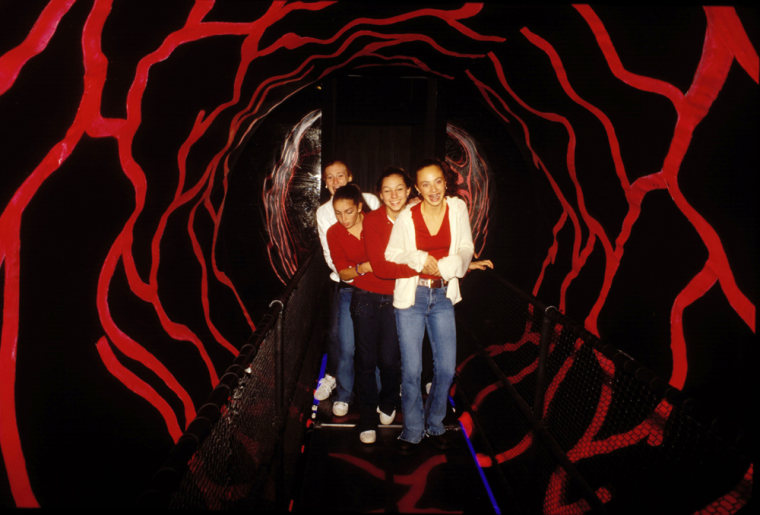Many teens, and some a bit older, will be spending this Halloween visiting a creepy, ghoul-filled haunted house, or watching a gory, horror flick. They’ll say they love to shiver in fear and scream in terror.
Or do they? Researchers say it’s actually the adrenaline rush — and the wave of relief once the fright is over — that makes being scared so much fun.
Glenn Sparks, a Purdue University professor, said the euphoria people feel when the credits roll or they finally leave a house of horrors is what keeps them coming back — even if they absolutely hated the experience.
“People come away from these movies oftentimes feeling really happy and relieved that the horror is over,” said Sparks, who studies people’s attraction to the macabre. “They remember that they felt good and so they say, ‘Oh yeah, I like scary movies.’ But it’s not that they really like being scared. They just felt good afterward.”
Sparks said that natural, adrenaline-induced high often lingers long enough to supplant moviegoers’ memories of cringing in their seats with a favorable recollection of the experience.
Haunted houses and horror movies
Indianapolis eighth-grader Ross Dougherty says he likes haunted houses, especially when a ghoul “pops out of the dark and freaks you out.”
But it’s horror films that are the 13-year-old’s passion.
“They’re cool because they have gore and fighting and surprises. You know something’s going to happen,” Dougherty said.
He recently treated himself to the “Dawn of the Dead” remake and was delighted as the zombielike dead rose from their graves to dine on a group of people barricaded in a shopping mall.
Dougherty says he’s never had nightmares from these movies, but admits to being a bit rattled by eerie scenes in the film “Sleepy Hollow.”
Sense of conquest
Sparks says that for men and boys, in particular, the attraction of horror movies, haunted houses and other unsettling experiences is the ability to conquer something that seems threatening, even though it poses no real harm.
In surveys he’s done over the years with Purdue students shown horror films such as “The Exorcist,” the students split into one of three camps when questioned afterward.
A third of the students say they enjoyed the film and wanted more; a third said they’d be willing to see more, depending on the film’s nature; and the remaining third said they detested it and had seen enough.
For that last group, Sparks said the celluloid horror truly threatened them.
“Fear is really the emotion that comes about when you end up concluding that your own well-being is threatened. That’s what fear is,” he said. “People place themselves in the situation that the characters are in the film — they think about the possibility that something like this could happen to them.”
How much fright can you stand?
Sparks said he considers Stanley Kubrick’s version of “The Shining” — about a man driven to madness and murder while serving as a caretaker of a snowbound hotel — the most frightening film he’s seen.
He said the idea of being marooned in a sprawling mountaintop hotel — albeit one filled with ghostly figures — taps into a primal fear of isolation.
Jerome Kagan, a Harvard University professor of psychology who has studied fear, emotions and phobias, said people’s tolerance of frightening situations varies widely according to their experiences. For some, scary images on the silver screen are enough, but others need more, such as parachuting or bungee-jumping.
“People like novelty. They like to experience different things. And some people need more ‘different’ than you and I,” he said. “I play tennis for a natural high, which is much less risky.”
